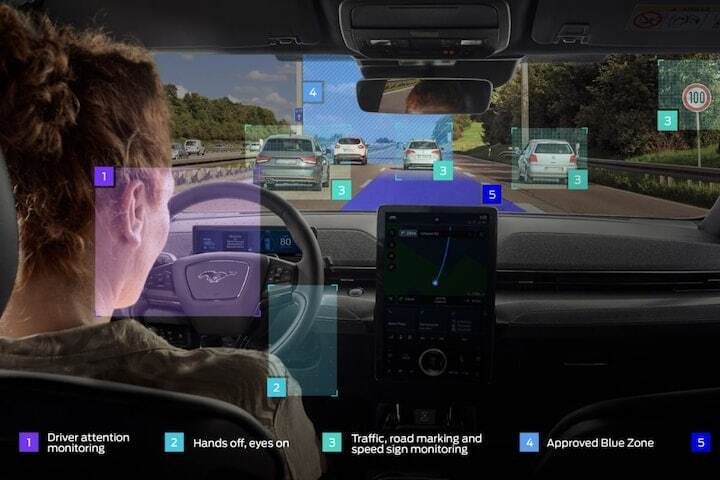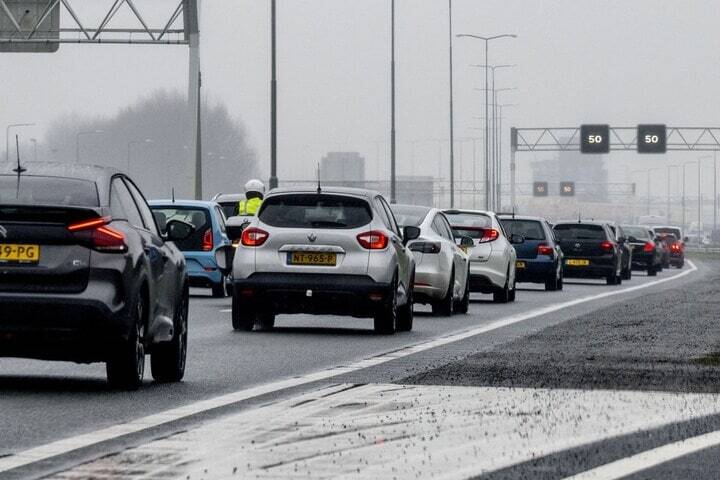
Toll gates, peak vignettes, carpool lanes, and more asphalt: none of it helps. The Netherlands is often gridlocked during rush hour. This Whit weekend 70 years ago, the first traffic jam was an almost festive event.
The first time the word ‘file’ (traffic jam) appears in the Dutch language is in the novel Eline Vere, published in 1888 by Louis Couperus. He uses it for a traffic jam of horse trams on their way to Scheveningen that cannot handle the influx of passengers on a busy day. But in the 19th century, horse carts and carriages were already in traffic jams in Amsterdam on access roads to the city.
But the horses disappear and are increasingly replaced by more horsepower at the beginning of the last century. More cars mean more need for good infrastructure. In 1937, the first highway in the Netherlands was opened, the then-national highway 12 between Voorburg and Zoetermeer. It is now part of the A12 between The Hague and the German border.
Between 1945 and 1965, the national road network grew from 100 to 600 kilometers, and as a result, the demand for even more automobiles automatically grew. On a sunny first Whit Sunday in 1955, the first car traffic jam occurred near Oudenrijn, the first intersection of motorways in the Netherlands. This is because traffic from the Randstad on its way to the Veluwe crosses the traffic flows of German tourists traveling to the coast and bulb fields.
Roadside Tourism
However, there is no question of any discord. The traffic jams of that time are mostly recreational traffic jams, because most passenger cars in the 1960s were mainly used in leisure time. The term ‘Sunday driver’ dates from that time. A traffic jam is modern, because they also exist in the United States. There is even ‘roadside tourism’: Dutch people go picnicking on the side of the road to watch all the slowly moving cars.
From the 1960s, the use of the car changed and the car became cheaper. The economy is booming and the Netherlands is getting into cars en masse. More and more Dutch people are moving outside the city and the commuter is born. The traffic jam thus becomes an everyday phenomenon. During the harsh winter of 1963, the ANWB (Dutch Automobile Association) started providing traffic information via the radio.
The traffic police are fighting the first traffic jams. From their police Porsches, they warn oncoming traffic about traffic jams. On the other side of the traffic jam, agents are sometimes busy ‘waving up’ the traffic. Politicians are also trying to solve the traffic jams. But whether it concerns peak vignettes, toll lanes, stimulating public transport, or peak surcharges: nothing helps. Also 80 kilometer signs, an increase in gasoline excise, road pricing, and toll gates: it all turns out to be in vain.

Autonomous driving the solution? Not according to Erik Verhoef, professor of spatial economics at the VU in Amsterdam.
Human problem
As a motorist, you can also do little about the traffic jams, apart from not driving during rush hours. Roads simply have a certain maximum capacity, and during rush hour that is quickly exceeded. A few percent extra cars can mean the difference between driving smoothly and standing still hopelessly. And you can’t just solve that difference with extra asphalt or other marginal measures.
According to Erik Verhoef, professor of spatial economics at the VU in Amsterdam, the traffic jam problem is mainly a human problem. “If the flow is better, the people who now use the car less will return to the rush hour. New roads have an attracting effect, which immediately negates the advantage. Commuters move even further away from the city if they know they can drive back and forth faster again.”
For the same reason, Verhoef has little confidence in self-driving cars and artificial intelligence as a solution to the traffic jam problem. “Suppose that it becomes technically possible to drive autonomously, then commuters have even less reason to live near their work. If they can just work or relax while driving, the incentive to live near your work disappears even more.”

Spread to work
But is there nothing that can solve the daily traffic jams? Yes: according to science, it only helps if we go to work spread out. “That can only be done by introducing a levy for the busiest moments of the rush hour. The more popular the time, the more it costs to drive through a junction at that time.
For this reason, the cabinet wanted to introduce road pricing in 2030, but that plan is currently on hold. Verhoef is not sorry, because with this so-called ‘flat’ kilometer charge you would pay per kilometer, regardless of the time. According to the economist, that doesn’t work nearly as well against traffic jams, because people are not rewarded for adjusting their travel time.
“You can compare it to when you would not only raise the dikes in the fight against the water, but the whole of the Netherlands,” he claims. “You don’t do that either. You have to focus on the peak moment, the busiest times and places: then you can effectively solve the traffic jams. Unfortunately, this requires a targeted financial incentive.”
Until then, according to Verhoef, you have to make the best of it in the traffic jam. Moving along calmly and not doing any crazy tricks is his advice. “And leave those diversions advised by your navigation system alone. Many of those routes go through villages and places that are not designed for large traffic flows. It is rarely faster, you consume more fuel, and it is more unsafe and unhealthy for the people who live along these types of back roads.”